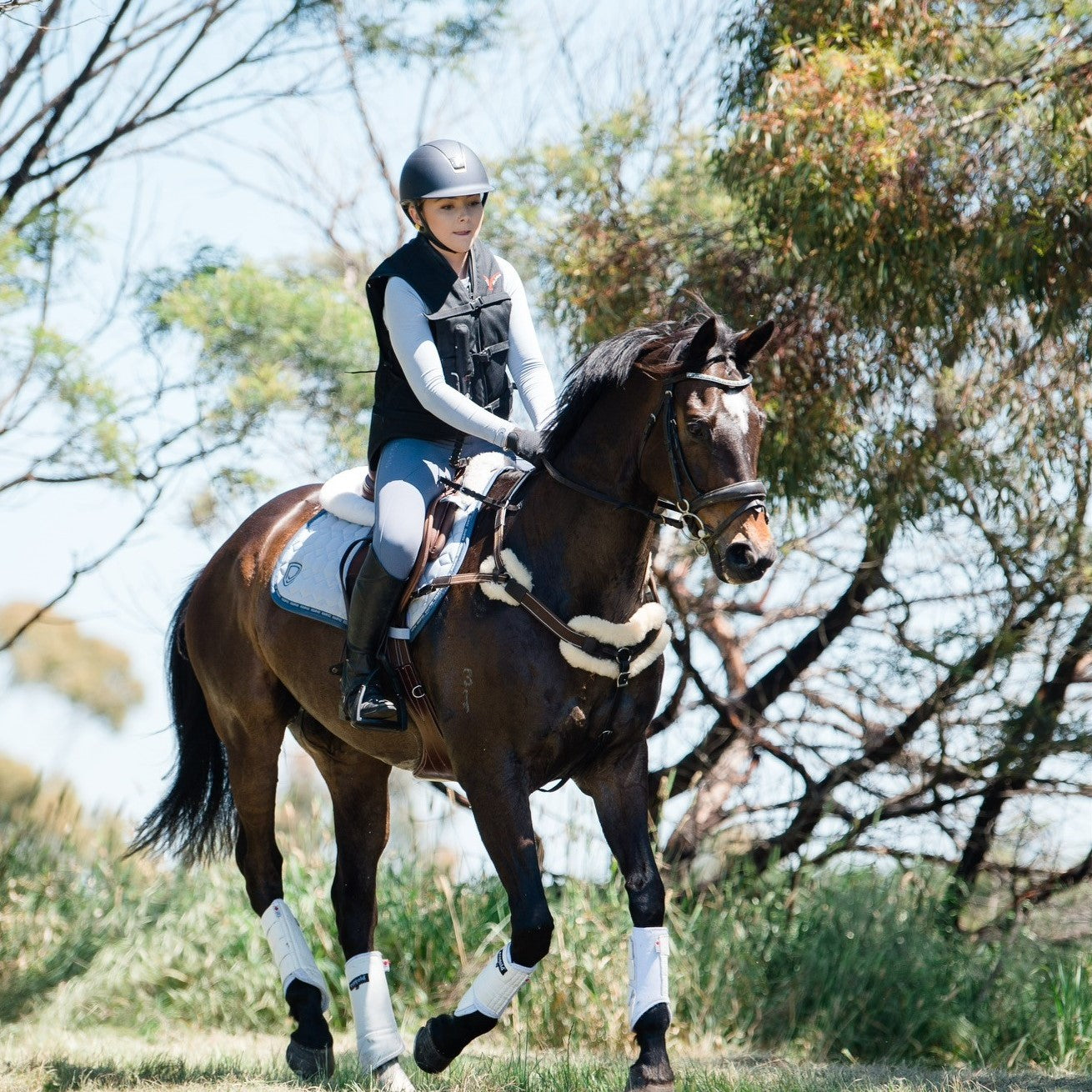As you begin to climb through the levels, the XC cooldown becomes a pivotal part of a competition routine. The cooldown is incredibly important in reducing a horse's heart rate and temperature, and maximising their recovery.

©- British Eventing
What to do in a cool-down:
- Keep your horse walking at all times. You may stop to take gear off, always starting with the boots and studs.
- Make sure you sponge/spray cold water on them, and scrape it off immediately. If the water stays on, it will heat the horse instead of cooling them down.
- Have multiple people to ensure your gear is coming off and water is going on simultaneously.
- Check for any wounds and respond accordingly. Keep them as clean as possible.
- Continue walking and watering them down until their temperature and heart rate return to a normal level. At FEI Events, there will be a vet in the box to check this. If there is no vet, it is a good idea to invest in your own portable heart rate monitor. Most events will let you leave the finish box when the heart rate is between 60-75 bpm.
- Have ice boots packed and ready to put on at the finish box, or straight away on return to the stable. Cold therapy will reduce swelling and increases circulatory flow. Ice should only be applied for a maximum of 20 minutes at a time.
What to have:
- Sponges
- Sweat Scrapers
- Multiple buckets
- Cart to take the gear back
- Water for the rider
- Stud kit to remove studs
- Ice to put in water if it has heated up
- Ice boots
- Portable water sprayer if there is no hose
- Stethoscope or heart rate monitor
- Small first aid kit in case of abrasions



Share:
What to wear in your Eventing Trot Up
2 in 1 Equine and Canine products that we love!